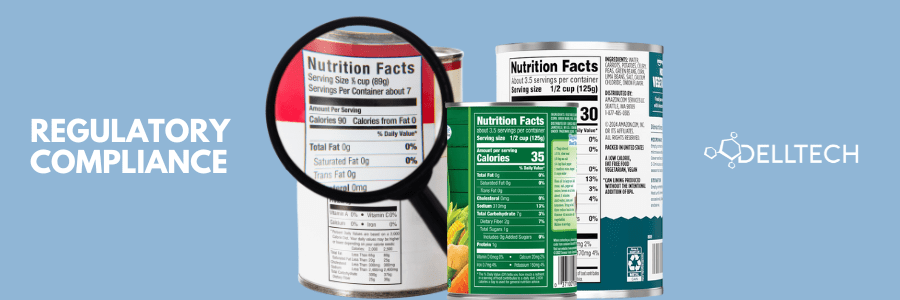By: Kirsten Alcock, Manager of Product Safety, email
The California Cleaning Product Right To Know Act seems to be a hot topic these days. Many more companies are becoming aware of this regulation and are looking to Dell Tech for guidance on the requirements. On October 15, 2017, the California Cleaning Product Right to Know Act of 2017 was signed by Governor Jerry Brown. The act had two deadlines – one for label and one for websites. Both of the deadlines have now passed and if you are selling products to California that fall under this act, you are expected to be in compliance for realms.
This law required Manufacturers and Distributors of Consumer & Commercial air care (including air fresheners and reed diffusers), automotive cleaning/maintenance, general cleaning, polish and floor maintenance products to provide a specific list of the chemicals used in their products on their website. There are no exemptions for small labels or small businesses.
WEBSITE: The information to be disclosed on your website as of January 1, 2020, included but is not restricted to:
- A list of all nonfunctional constituents present ≥ 0.01 percent (100 ppm).
- 1, 4-dioxane if it is present at ≥ 0.001 percent (10 ppm).
- CAS number for each listed ingredient.
- The functional purpose served by each intentionally added ingredient.
- Weblinks to the designated lists for any ingredient disclosed.
- A link to the Safety Data Sheet for the Product.
LABEL: Label Disclosure was required on January 1, 2021, of this year.
The required changes for the product label include,
- Disclosure of intentionally added ingredients.
- Disclosure of any ingredient present on any one of the 23 different Designated Lists and present at ≥ 0.01%.
- Disclosure of Fragrance allergens present at ≥ 0.01%.
- A toll-free number to the manufacturer.
- A website address for the manufacturer.
Are you compliant with BOTH of these requirements? Do you know and understand the requirements? Do you need help to determine if you are on any of these designated lists?
Dell Tech Laboratories has created an Excel®-based search tool that will allow you to quickly and easily search all your CAS numbers against all of the Designated Lists. Create your product’s label and website disclosure in minutes instead of hours.
If you’re not interested in the tool but would still like our help to identify the components as you only sell a handful of products, we can also help you. As part of our Enhanced CPSC classification service, we not only classify your product properly for US consumers but provide you with a document that contains your mandated label information for California. This is a process that can take hours to research without the proper tools set in place.
Contact Dell Tech today to learn more about the regulations and how we can help.
Contact:
Dell Tech
Kirsten Alcock, B.Sc. (Hons)
Manager, Product Safety Group
519-858-5074
kirsten@delltech.com
Dell Tech has provided professional, confidential consulting services to the chemical specialty
industry in Canada, the USA, Europe, and Asia for the last 40 years.
Contact us today for more information.





